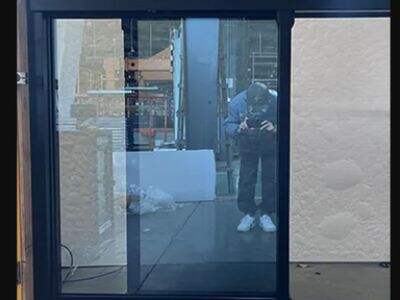Passive houses are amazing, but Hunan gs-window want to share some cool information about how passive houses work for different places. A passive house is a type of house that requires very little energy. Its often naturally inspired to heat or cool itself by things like sunlight. To summarize – Passive houses are a comfortable living environment with a positive impact on our surroundings. They generate far less carbon dioxide than typical homes, which is good to help protect our planet. So, where do they need passive houses? Let’s find out together.
Rural Areas with Cold Weather
Passive houses are even more useful in the colder parts of rural areas. If you live where it’s cold for many months of the year, you know how the importance of having a warm house. To the tune of, keeping a normal house warm is expensive and also ecologically damaging with energy levels needed. Passive houses are constructed to ”trap heat inside and block cold air from entering.” This makes passive tilt and turn window ideal for rural areas with harsh winters. And they can even use sunlight to create electricity, which is clean and environmentally-friendly. In fact, by using less energy, families can save money on heating bills, while also helping to keep the Earth healthy.
Cities with High Energy Needs
Most cities are dense with homes and businesses that consume significant energy. Demanding so much energy this way can harm the environment and drive climate change. This is where passive houses come into play as they use significantly less energy than regular houses. This matters since it results in reduced total energy demand in the city. Reducing energy consumption is good for the energy supply of cities and contributes to the sustainability of cities in the future. Passive houses can also silence neighborhoods, keeping heat in and noise out.
Coastal Regions with Poor Weather
Yes, coastal areas are beautiful but can be subject to ugly weather (think hurricanes and flooding). Normal houses in these places may get damaged or even completely destroyed, which is devastating for the families residing there. Passive houses are made to withstand those types of storms better. They are engineered to withstand high winds and heavy amounts of water, which makes them safer in extreme weather events. Moreover, Sliding Window can be constructed with special materials that will not be damaged by salt water, which is very important in those areas where the house is near the ocean. That allows families to have a bit more peace of mind in their homes when the weather turns nasty.
Restricted Energy in Inaccessible Locations
In certain secluded areas, regular energy sources, like electricity and gas, can be either very hard to access, or expensive. For families living in these locations, passive houses are the solution. These homes are powered by natural energy sources (the sun, wind, etc.) so they are not reliant on traditional energy supplies. A good quality of life in remote areas without the high energy bills to match. It’s a clever way of life that allows them to save money and remain comfortable.
Fragile Ecosystems
This planet has countless precious ecosystems, such as rainforests and coral reefs. Such areas are delicate and can be damaging by emissions and other damaging interests. Between using between 80% and 90% less energy than a standard residential unit, passive houses help preserve the environment. This is great news for families residing in these unique ecosystems, allowing them to live in their homes and not do any harm to nature. But with passive houses that manter these ecosystems so they can be lively and keep going through the generations.
In conclusion, it is a really great and useful option for various different locations passive homes. Passive houses are useful in cold regions in the countryside, well-developed cities, communities with bad weather in the coastline, reclusive areas, and sensitive environments. Hunan gs-window is proud to participate in the construction of house sliding window, which is part of the sensible way to a better and sustainable world. Thank you for reading. We hope you learned something new about how passive houses can help our environment and our communities.
 EN
EN
 AR
AR
 NL
NL
 FR
FR
 DE
DE
 EL
EL
 IT
IT
 JA
JA
 KO
KO
 PL
PL
 PT
PT
 RO
RO
 RU
RU
 ES
ES
 TL
TL
 IW
IW
 ID
ID
 SR
SR
 SK
SK
 UK
UK
 VI
VI
 SQ
SQ
 HU
HU
 TH
TH
 TR
TR
 FA
FA
 AF
AF
 MN
MN




